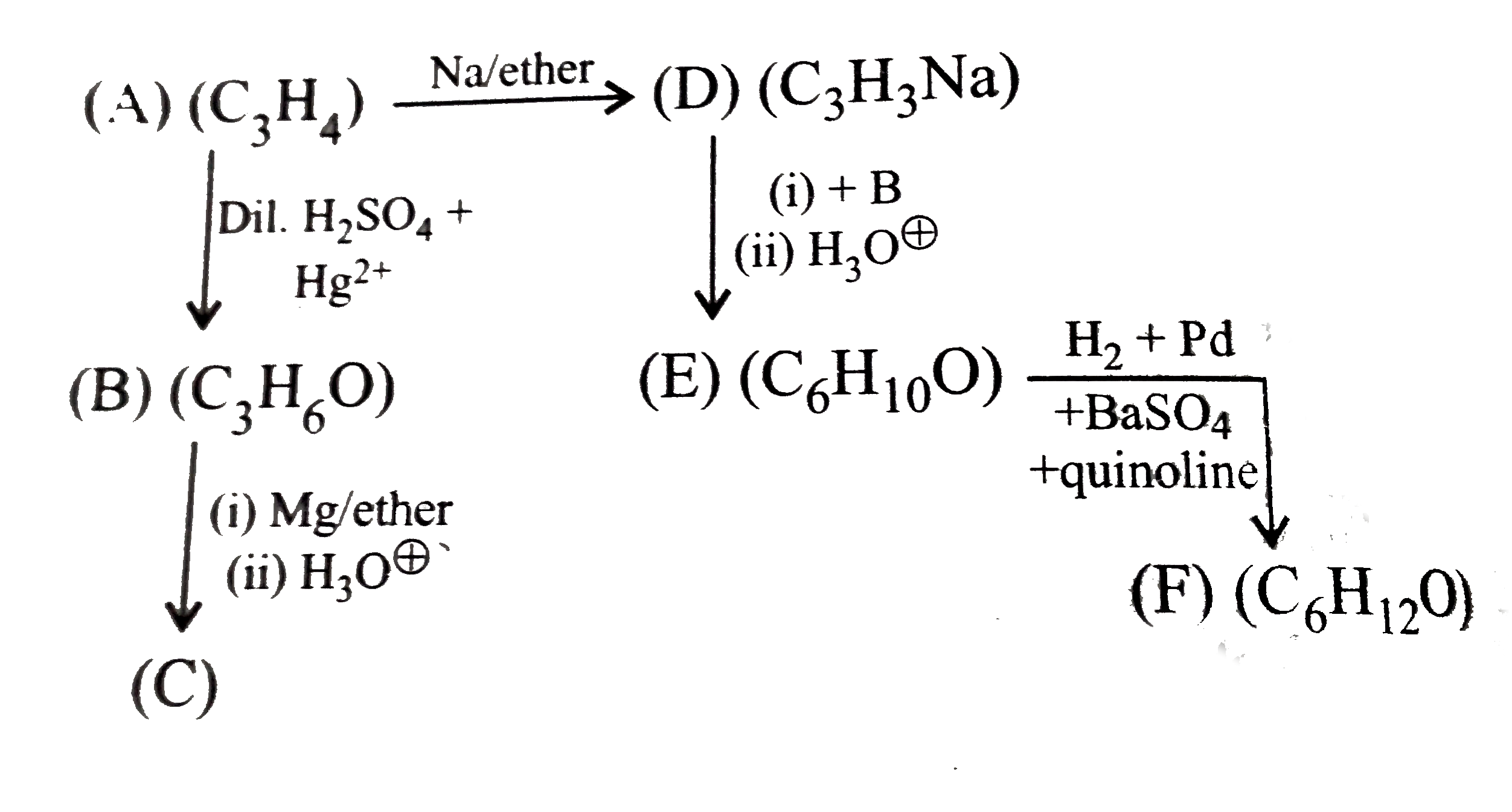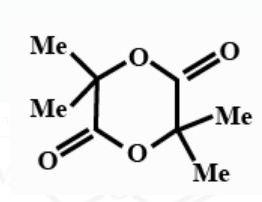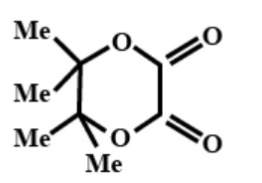An alcohol [A] with molecules formula (C4H10O) o oxidation with aciddified potassium dichromate gives acid [B] (C4H8O2). Compound [A] when dehydrated with conc. H2SO4 at 443K gives compound [C]. Treatment of [C] with aqueous H2SO4 gives compound [D] (C4H10O) which is an isomer of [A]. compound [D] is resistant to oxidation but compound [A]can be easily oxidised. Identify [A], [B], [C] and [D]. Name the type of isomerism exhibited by [A] and [D].
A : (CH3_(2)CHCH2OH B: CH3CH(CH3)COOH
C: (CH3)2C=CH2 D: (CH3)2−C−OH
Topper's Solved these Questions
- ALCOHOLS, PHENOLS AND ETHERSBOOK - CBSE COMPLEMENTARY MATERIALCHAPTER - ALCOHOLS, PHENOLS AND ETHERSEXERCISE - SHORT ANSWER-II TYPE QUESTIONS (3 Marks)
7 Videos
- ALDEHYDES,KETONES AND CARBOXYLIC ACIDSBOOK - CBSE COMPLEMENTARY MATERIALCHAPTER - ALDEHYDES,KETONES AND CARBOXYLIC ACIDSEXERCISE - LONG ANSWER TYPE QUESTIONS (5 MARKS)
21 Videos
Similar Questions
A neutral organic compound X of molecualr formula C2H6O on oxidation with acidified potassium dichromate gives an acidic compound Y. Compound X reacts with Y on warming in the presence of conc H2SO4 to give a sweet smelling substance Z.What are X,Y and Z?
View SolutionA compound [A] with molecular formula C4H10O reacts rapidly with metallic sodium but very slowly with Lucas reagent. When [A] treated with hot concentrated H2SO4, it gives a compound [B] C4H8 which upon hydration with aqueous H2SO4 forms a compound [C] with molecular formula C4H10O. The compound [C] is almost unert to metallic sodium but reacts rapidly with Lucas reagent. What are the compounds [A], [B] and [C] ? Explain the reaction involved.
View Solution
Knowledge Check
An optical active alcohol of formula C4H10O on oxidation given which of the following compound?
A(CH3)2CHCHOB(CH3)2C=CH2CCH3COC2H5DCH3CH2CH2CHOAn alcohol (A) C4H10O on oxidation with acidified K2Cr2O7 gives a carboxylic acid (B) C4H8O2. (A) on treatment with conc. H2SO4 produces (C) C4H8. (C) on treatment with dil. H2SO4 gives (D) C4H10O . The compound (D) is isomeric with compound (A). Compound (D) resist oxidation . What are (A) and (D) respectively ?
ACH3CH2CH2CH2OHand(CH3)3OHB(CH3)3COHandCH3CH2CH2CH2OHC(CH3)2CHCH2OHandCH3CHOHC2H5D(CH3)2CHCH2OHand(CH3)3COH
The compound F(C6H12O) on oxidative ozonolysis yirlds acetic acid and a compound (G) (C4H8O3). The new compound (G) on heating gives:A BMe−CH=C=CH−EtC
BMe−CH=C=CH−EtC D
D
A compound with molecular formula C4H10O4 on acylation with acetic anhydride gives a compound with molecular formula C12H18O8. How many hydroxyl groups are present in the compound?
View SolutionA compound with molecular formula C6H10O4 on acylation with acetic anhydride gives a compound with molecular formula C12H18O8. How many hydroxyl groups are present in the compound?
View SolutionThe compound X(C3H6O) on oxidation gives a compound Y(C3H6O2) . The compound Y is
View SolutionMolecular formula C4H8O oxidation gives acetic acid . The structure of C4H8O2 will be
View SolutionAn alcohol ( A ) with molecular formula C4H10O on oxidation forms compound ( B ) C4H8O.The compound ( B ) gives iodoform test, but does not reduce ammonical silver nitrate, ( B ) on treatment with amalgamated zinc and HCl gives compound ( C ) C4H10. Identify A,B,C.
View Solution
